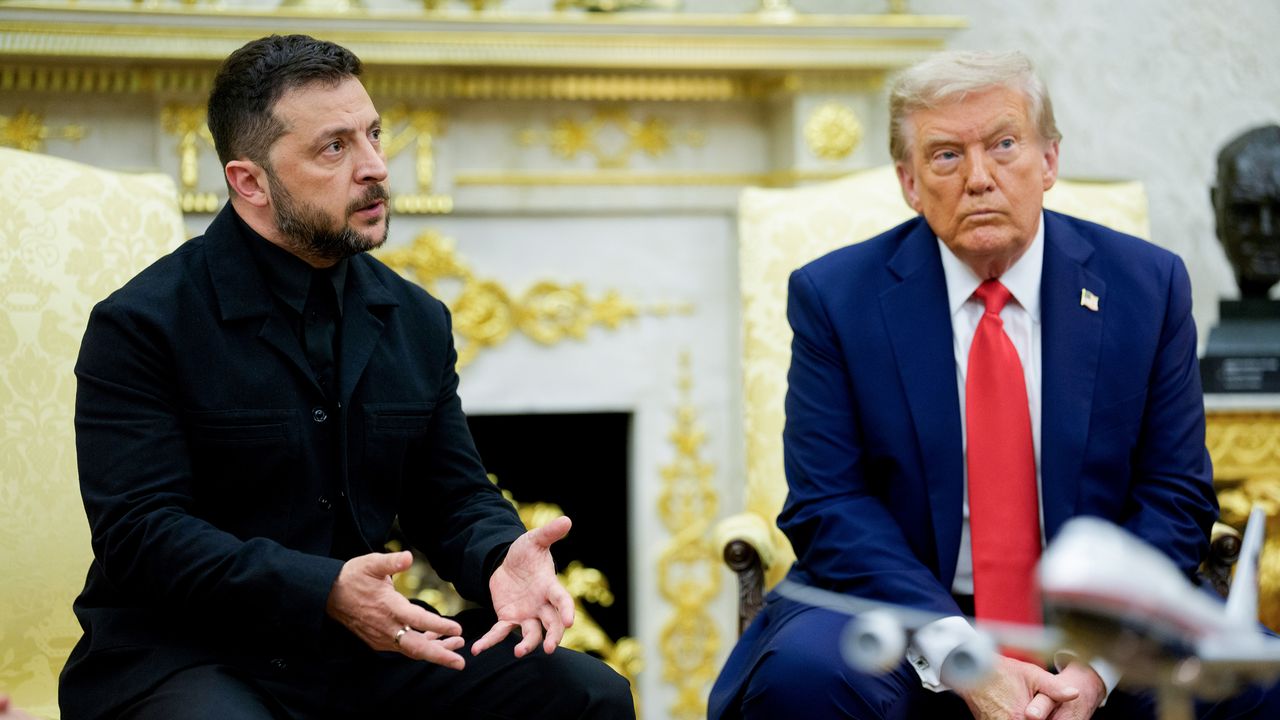It wasn’t a “worst-case scenario,” Joshua Yaffa says of yesterday’s White House meeting between Donald Trump and Volodymyr Zelensky. But negotiations to end the war remain mired in misunderstandings. Plus:
Volodymyr Zelensky and Donald Trump in the Oval Office on Monday.
Photograph by Aaron Schwartz / CNP / Bloomberg / Getty
Ian Crouch
Newsletter editor
Volodymyr Zelensky and seven other European leaders visited the White House yesterday to press the Ukrainian position, in a hastily scheduled summit, just days after Donald Trump’s meeting with Vladimir Putin in Alaska yielded no firm movement toward ending the war. “We will give them very good protection and very good security,” Trump said, of Ukraine’s request for ongoing safety guarantees after a potential end to hostilities, but he offered no details.
To help make sense of the latest developments, I reached out to Joshua Yaffa, a New Yorker contributing writer who has been reporting on the Russian invasion of Ukraine from its first days. Our conversation has been edited and condensed.
These war negotiations were framed to you by one analyst this spring as playing out before an audience of one: Donald Trump. Both Putin and Zelensky are trying to gain an edge. Where do things stand?
After Alaska, it certainly looked like, yet again, Trump shifted both in tone and substance toward Putin’s set of positions on Ukraine. But, with Trump, little is fixed or permanent—and I don’t think it’s right to say that he has taken Putin’s side conclusively or that Putin is getting the entirety of his wish list from Trump.
That said, Putin did emerge with two key advantages. First, he was able to switch the perception Trump seems to have had in recent weeks—that Putin is the impediment to peace or the problem child in this war—and instead appeared in Trump’s eyes to be the constructive partner, as opposed to Zelensky and the Europeans, in resolving it.
Second, Putin got Trump to stop talking about a ceasefire and start talking about negotiations to end the war. For Russia, continuing to fight is more advantageous than freezing the conflict as it stands. We shouldn’t exaggerate the extent of Russia’s military edge, but in a prolonged war of attrition, it has resources that Ukraine struggles to match. At significant cost to itself, Russia has time on its side.
But it’s important to note that we didn’t see in the Oval Office yesterday what many Ukrainians feared would be the worst-case scenario. That would have been Trump really pushing Zelensky to accept Putin’s position in which Ukraine, for example, has to withdraw from the remainder of the Donbas that’s still under its control. And Trump is also now talking about some kind of architecture for security guarantees. Ukraine may still be very frustrated about what that turns out to look like, but the fact that Trump didn’t dismiss it outright was another relative measure of success.
How confident could Ukraine really be in Trump’s statements about those security guarantees? And how could that position be made acceptable to Putin?
For Ukraine this is the whole ball game. It has to come out of this war, with all that it has suffered—not just since 2022 but 2014—with a sense that it is on an irrevocable path toward integration with the West and Western institutions. Security guarantees are necessary as a symbol of that, but also to insure that the path can’t be undone tomorrow, next year, or five years from now. Ukraine can’t integrate into the Western transatlantic community if it’s living under an ever-present threat of renewed invasion. Nothing can really happen in terms of Ukraine becoming a functioning European country, let alone a thriving one, until the security question is solved.
On the other side, however, this question gets to the very point of the war for Putin. The invasion was not about territory, per se; it was about insuring that Ukraine, in Putin’s paranoid vision, doesn’t become a forward operating base for the West to use in undermining Russia. That is, to become a country with politics and society hostile to Russia and, God forbid from Putin’s perspective, with Western weapons or troops or even bases appearing on its territory. So, there’s a paradox here. Anything that would be satisfactory to Ukraine, in terms of its own security, is intolerable to Russia, and contradicts why Putin launched this invasion in the first place.
